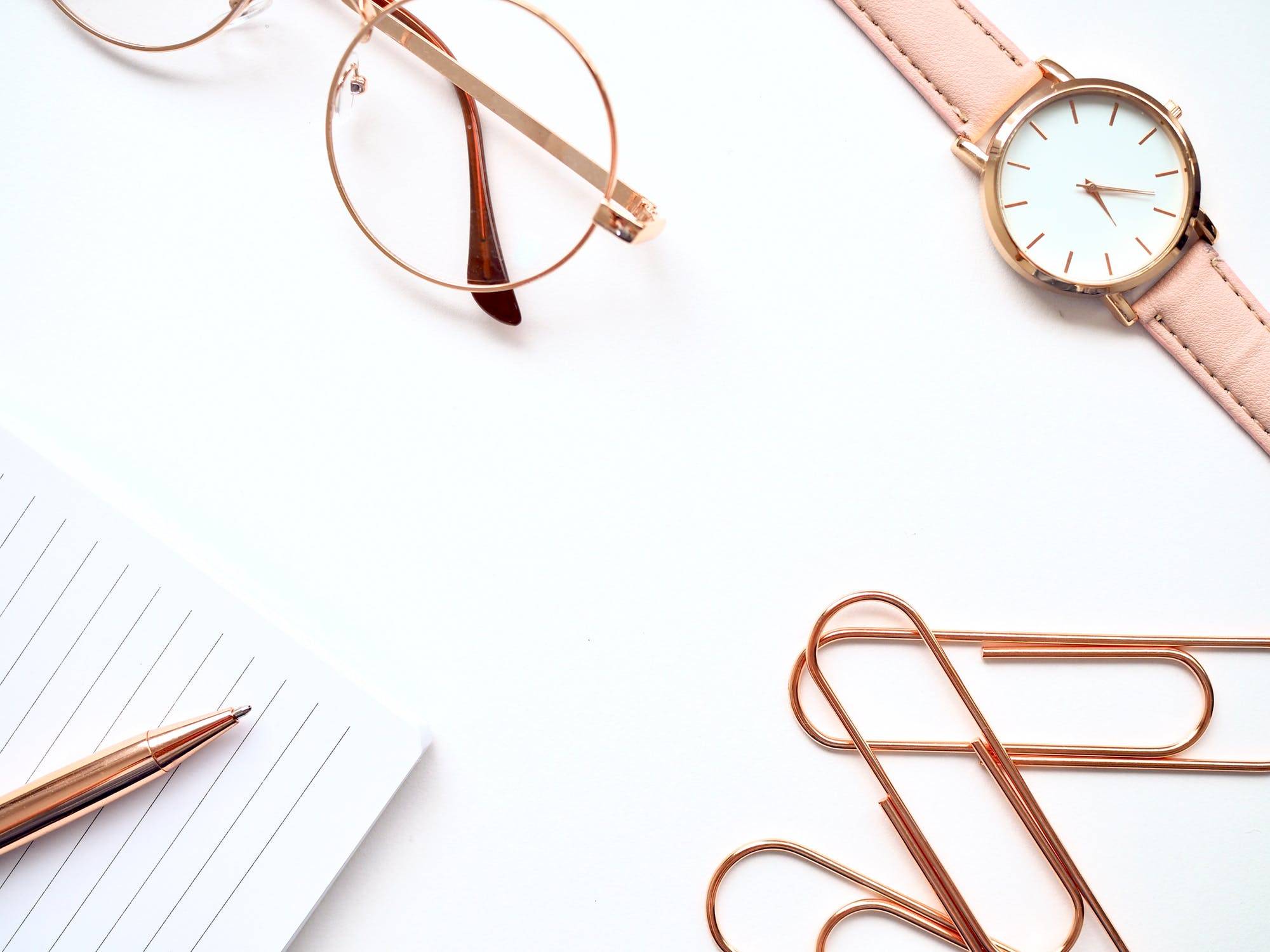Ever wondered what an escapement is or what is a jewel?
We have compiled the greatest list (A-Z) of all the horological terms to help you with your watch and understand the technology behind keeping it ticking (or not).

ANNUAL CALENDAR
The automatic allowances for the different lengths of each month of a year in the calendar module of a watch. This type of watch usually shows the month and date, and sometimes the day of the week and the phases of the moon.
ANTIMAGNETIC
Magnetic fields found in common everyday places affect mechanical movements, hence the use of anti- or non- magnetic components in the movement. Some companies encase movements in antimagnetic cores.
ANTIREFLECTION
A film created by steaming the crystal to eliminate light reflection and improve legibility. Antireflection functions best when applied to both sides of the crystal, but because it scratches, some manufacturers prefer to have it only on the interior of the crystal. It is mainly used on synthetic sapphire crystals.
AUTOMATIC WINDING
A rotating weight set into motion by moving the wrist winds the spring barrel via the gear train of a mechanical watch movement. Automatic winding was invented during the pocket watch era in 1770, but the breakthrough automatic winding movement via rotor began with the ball bearing Eterna-Matic in the late 1940s. Today we speak of unidirectional winding and bidirectionally winding rotors, depending on the type of gear train used.
BALANCE
The beating heart of a mechanical watch movement is the balance. Fed by the energy of the mainspring, a tirelessly oscillating little wheel, just a few millimetres in diameter and possessing a spiral-shaped balance spring, sets the rhythm for the escape wheel and pallets with its vibration frequency. Today the balance is usually made of one piece of antimagnetic glucydur, an alloy that expands very little when exposed to heat.
BAR OR COCK
A metal plate fastened to the base plate at one point, leaving room for a gear wheel or pinion. The balance is usually attached to a bar called the balance cock. Glash¸tte tradition dictates that the balance cock be decoratively engraved by hand.
BEVELING
To uniformly file down the sharp edges of a plate, bridge, or bar and give it a high polish. The process is also called anglage. Edges are bevelled at a 45∞ angle. This is painstaking work that needs the skilled hands and eyes of an experienced watchmaker or anglage.
BRIDGE
A metal plate fastened to the base plate at two points, leaving room for a gear wheel or pinion.
CARBON FIBRE
A very light, sturdy composite material. Carbon fibre is composed of filaments comprised of several thousand seven-micron carbon fibres held together by resin. The arrangement of the filaments determines the quality of a component, making each unique. Carbon fibre is currently being used for dials, cases, and even movement components.
CALIBRE
A term, similar to type or model that refers to different watch movements.
CHAMPLEV
A dial decoration technique, whereby the ëA- metal is engraved, filled with enamel, and baked.
CERAMIC
An inorganic, nonmetallic material formed by the action of heat and practically unscratchable. Pioneered by Rado, ceramic is a high-tech material generally made from aluminium and zirconia oxide. Today, it is used generally for cases and bezels and now comes in many colours.
CHRONOGRAPH
From the Greek Chronos (time) and graphein (to write). Originally a chronograph literally wrote, inscribing the time elapsed on a piece of paper with the help of a pencil attached kind of hand. Today this term is used for watches that show not only the time of day but also certain time intervals via independent hands that may be started or stopped at will. Stopwatches differ from chronographs because they do not show the time of day.
CHRONOMETER
Literally, ìmeasurer of time. î As the term is used today, a chronometer denotes an exceptionally accurate watch (one with a deviation of no more than 5 seconds a day for mechanical movements). Chronometers are usually supplied with an official certificate from an independent testing office such as the COSC. The largest producer of chronometers in 2008 was Rolex with 769,850 officially certified movements.
COLUMN WHEEL
The component used to control chronograph functions within an accurate chronograph movement. The presence of a column wheel indicates that the chronograph is fully integrated into the movement. In the modern era, modules are generally used that is attached to a base calibre movement.
CONSTANT FORCE MECHANISM
Sometimes called a constant force escapement, it isnít really: in most cases, this mechanism is ìsimplyî an initial tension spring. It is also known in English by part of its French name, the remontoir, which actually means ìwinding mechanism.î This mechanism regulates and portions the energy that is passed on through the escapement, making the rate as even and precise as possible.
COSC
The Controle Officiel Suisse de Chronometrage, the official Swiss testing office for chronometers. The COSC is the worldís largest issuer of so-called chronometer certificates, which are only otherwise given out individually by certain observatories (such as the one in Neuch‚tel, Switzerland). For a fee, the COSC tests the rate of movements that have been adjusted by watchmakers. These are usually mechanical movements, but the office also tests some high- precision quartz movements. Those that meet the specifications for being a chronometer are awarded an official certificate as shown here.
C‘TES DE GENVE
Also called vague de GenËve and Geneva stripes. This is a traditional Swiss surface decoration comprising an even pattern of parallel stripes, applied to flat movement components with a quickly rotating plastic or wooden peg. Glash¸tte watchmakers have devised their own version of cÙtes de GenËvethat is applied at a slightly different angle called Glash¸tte ribbing.
CROWN
The crown is used to wind and set a watch. A few simple turns of the crown will get an automatic movement started, while a manually wound watch is completely wound by the crown. The crown is also used for the setting of various functions, almost always including at least the hours, minutes, seconds, and date. A screwed-down crown can be tightened to prevent water from entering the case or any mishaps while performing extreme sports such as diving.
EQUATION OF TIME
The mean time that we use to keep track of the passing of the day (24 hours evenly divided into minutes and seconds) is not equal to true solar time. The equation of time is a complication devised to show the difference between the meantime shown on oneís wristwatch and the time the sun dictates.
ESCAPEMENT
The combination of the balance, balance spring, pallets, and escape wheel, a subgroup which divides the impulses coming from the spring barrel into small, accurately portioned doses. It guarantees that the gear train runs smoothly and efficiently.
FLINQU
A dial decoration in which a guilloche design is given a coat of enamel, softening the pattern and creating special effects.
FLYBACK CHRONOGRAPHY
A chronograph with a special dial train switch that makes the immediate reuse of the chronograph movement possible after resetting the hands. It was developed for special timekeeping duties such as those found in aviation, which require the measurement of time intervals in quick succession. A flyback may also be called a Retour en vol.
GAR TRAIN
A mechanical watchís gear train transmits energy from the mainspring to the escapement. The gear train comprises the minute wheel, the third wheel, the fourth wheel, and the escape wheel.
GLUCYDUR
Glucydur is a functional alloy of copper, beryllium, and iron that has been used to make balances in watches since the 1930s. Its hardness and stability allow watchmakers to use balances that were poised at the factory and no longer required adjustment screws.
GUILLOCH
A surface decoration usually applied to the dial and the rotor using a grooving tool with a sharp tip, such as a rose engine, to cut an even pattern onto a level surface. The exact adjustment of the tool for each new path is controlled by a device similar to a pantograph, and the movement of the tool can be controlled either manually or mechanically. Real guillochis (the correct term used by a master of guilloche) are very intricate and expensive to produce, which is why most dials decorated in this fashion are produced by stamping machines.
INDEX
A regulating mechanism found on the balance cock and used by the watchmaker to adjust the movementís rate. The index changes the effective length of the balance spring, thus making it move more quickly or slowly.
JEWEL
To minimise friction, the hardened steel tips of a movementís rotating gear wheels (called pinions) are lodged in synthetic rubies (fashioned as polished stones with a hole) and lubricated with a very thin layer of special oil. These synthetic rubies are produced in exactly the same way as sapphire crystal using the same material. During the pocket watch era, real rubies with hand-drilled holes were still used, but because of the high costs involved, they were only used in movements with especially quickly rotating gears.
LIGA
The word LIGA is actually a German acronym that stands for lithography (Lithografle), electroplating (Galvanisierung), and plastic molding (Abformung). It is a lithographic process exposed by UV or X-ray light that literally ìgrowsî perfect micro components made of nickel, nickel-phosphorus, or 23.5-karat gold atom by atom in a plating bath. The components need no finishing or trimming after manufacture.
LUMINOUS SUBSTANCE
Tritium paint is a slightly radioactive substance that replaced radium as luminous coating for hands, numerals, and hour markers on watch dials. Watches bearing tritium must be marked as such, with the letter T on the dial near 6 o'clock. It has now for the most part, been replaced by nonradioactive materials such as Superluminova.
MAINSPRING
The mainspring, located in the spring barrel, stores energy when tensioned and passes it on to the escapement via the gear train as the tension relaxes. Today, mainsprings are generally made of Nivaflex, an alloy invented by Swiss engineer Max Straumann at the beginning of the 1950s. This alloy basically comprises iron, nickel, chrome, cobalt, and beryllium.
MINUTE REPEATER
A striking mechanism with hammers and gongs for acoustically signalling the hours, quarter hours, and minutes elapsed since noon or midnight. The wearer pushes a slide, which winds the spring. Normally a repeater uses two different gongs to signal hours (low tone), quarter hours (high and low tones in succession), and minutes (high tone). Some watches have three gongs, called a carillon.
PERPETUAL CALENDAR
The calendar module for this type of timepiece automatically makes allowances for the different lengths of each month as well as leap years until the next secular year, which will occur in 2100. A perpetual calendar usually shows the date, month, and four-year cycle, and may show the day of the week and moon phase as well. Perpetual calendars need much skill to complete.
PERLAGE
Surface decoration comprising an even pattern of partially overlapping dots, applied with a quickly rotating plastic or wooden peg.
PLATE
A metal platform has several tiers for the gear train. The base plate of a movement usually incorporates the dial and carries the bearings for the primary pinions of the ìfirst floorî of a gear train. The gear wheels are made complete by tightly fitting screwed-in bridges and bars on the backside of the plate. A speciality of the so-called Glash¸tte school, as opposed to the Swiss school, is the reverse completion of a movement not via different bridges and bars, but rather with a three-quarter plate.
POWER RESERVE DISPLAY
A mechanical watch contains only a certain amount of power reserve. A fully wound modern automatic watch usually possesses between 36 and 42 hours of energy before it needs to be wound again. The power reserve display keeps the wearer informed about how much energy his or her watch still has in reserve, a function that is especially practical on manually wound watches with several days of possible reserve. On some German watches, the power reserve is also displayed with the words ìaufî and ab.î
PULSOMETER
A scale on the dial, flange, or bezel that, in conjunction with the second hand, may be used to measure a pulse rate. A pulsometer is always marked with a reference number if it is marked with "gradue pour 15 pulsations", for example. The wearer counts fifteen pulse beats. At the last beat, the second hand will show the pulse rate in beats per minute on the pulsometer scale.
QUALITY» FLEURIER
This certification of quality was established by Chopard, Parmigiani Fleurier, Vaucher, and Bovet Fleurier in 2004. Watches bearing the Seal must fulfil five criteria, including COSC certification, passing several tests for robustness and precision, top-notch finishing, and is 100 per cent Swiss-made (except for the raw materials).
RETROGRADE DISPLAY
A retrograde display shows the time linearly instead of circularly. The hand continues along an arc until it reaches the end of its scale, at which precise moment it jumps back to the beginning instantaneously.
ROTOR
The rotor is the component that keeps an automatic watch wound. The kinetic motion of this part, which contains a heavy metal weight around its outer edge, winds the mainspring. It can either wind unilaterally or bilaterally (to one or both sides) depending on the calibre.
SAPPHIRE CRYSTAL
Synthetic sapphire crystal is known to gemologists as aluminium oxide (A1203) or corundum. It can be colourless (corundum), red (ruby), blue (sapphire), or green (emerald). It is virtually scratchproof; only a diamond is harder.
SCREW BALANCE
Before the invention of the perfectly weighted balance using a smooth ring, balances were fitted with weighted screws to get the exact impetus desired. Today a screw balance is a subtle sign of quality in a movement due to its costly construction and assembly utilising minuscule weighted screws.
SEAL OF GENEVA
Since 1886 the official Seal of this canton has been awarded to Genevan watch manufactures who must follow a defined set of high-quality criteria that include the following: polished jewel bed drillings, jewels with olive drillings, polished winding wheels, quality balances and balance springs, steel levers and springs with beveling of 45 degrees and cÛtes de Geneve decoration, and polished stems and pinions. The list was updated in 2012 to include the entire watch and newer components. Testing is done on the finished piece. The Seal consists of two, one of the movement, one on the case.
SILICIUM/SILICON
Silicon is an element relatively new to mechanical watches. It is currently being used in the manufacture of precision escapements.
SKELETONISATION
The technique of cutting movementís components down to their weight-bearing primary substance. This is generally done by hand in painstaking hours of microscopic work with a mini handheld saw, though machines can skeletonise parts to a certain degree.
SONNERIE
A variety of minute repeater thatólike a tower clockósounds the time not at the will of the wearer, but instead automatically (en passant) every hour (petite sonnerie) or quarter-hour (grande sonnerie).
SPLIT-SECONDS CHRONOGRAPH
Also known in the watch industry by its French name, the rattrapante. A watch with two-second hands, one of which can be blocked with a special dial train lever to indicate an intermediate time while the other continues to run. When released, the split-seconds hand jumps ahead to the position of the other second hand.
SPRING BARREL
The spring barrel contains the mainspring. It turns freely on an arbour, pulled along by the toothed wheel generally doubling as its lid. This wheel interacts with the first pinion of the movementís gear train. Some movements contain two or more spring barrels for added power reserve.
SWAN-NECK FINE ADJ USTM ENT
A regulating instrument used by the watchmaker to adjust the movementís rate in place of an index. The swan neck is especially prevalent in fine Swiss and Glash¸tte watchmaking.
TACHYMETER
A scale on the dial, flange, or bezel of a chronograph that, in conjunction with the second hand, gives the speed of a moving object. A tachymeter takes a value determined in less than a minute and converts it into miles or kilometres per hour. For example, a wearer could measure the time it takes a car to pass between two-mile markers on the highway. When the car passes the marker, the second hand will be pointing to the carís speed in miles per hour on the tachymetric scale.
TOURBILLON
A technical device invented by Abraham-Louis Breguet in 1801 to compensate for the influence of gravity on the balance of a pocket watch. The entire escapement is mounted on an epicyclic train in a ìcageî and rotated completely on its axis over regular periods of time.
VIBRATION FREQUENCY (VPH)
The spring causes the balance to oscillate at a certain frequency measured in hertz (Hz) or vibrations per hour (vph). Most of today ís wristwatches tick at 28,800 vph (4 Hz) or 21,600 vph (3 Hz). Less usual is 18,000 vph (2.5 Hz).
WATER RESISTANCE
Water-resistance is an essential feature of any timepiece and is usually measured in increments of one atmosphere (atm or bar, equal to 10 meters of water pressure) or meters and is often noted on the dial or case back. Watches resistant to 100 meters are best for swimming and snorkelling. Timepieces resistant to 200 meters are suitable for scuba diving. To deep-sea dive, there are various professional timepieces available for use in depths of 200 meters or more.
Related articles
What areas do you cover for watch repair
How do I contact Repairs By Post
Where can I read online reviews and testimonials
Is repairs by post an acredited repair center
A-Z list of horological terms you should know
What are the different types of watch movements?
How do I find my watch serial number
Omega serial numbers lookup Chart
Quick, affordable watch repairs from the comfort of your home, office, or on-the-go.
The UK's #1 watch repair website at your fingers.
Open a watch repair request, define your repair - upload photo's to our UK service center. Our expert team will examine your repair request. If your repair is accepted, we notify you the same day with FREE shipping instructions. Still not convinced? Read on.
Did we convince you? We knew you’d see sense.









